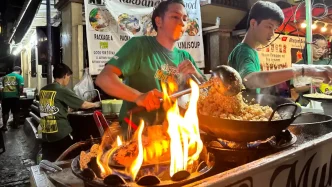In Singapore, a city known for its vibrant food culture, the act of eating takes on profound significance at the end of life. For many terminally ill patients in hospices, the last meal is more than sustenance—it’s a bridge to memories, a final connection to loved ones, and a source of comfort in their final days. From durian to chili crab and even fast food like KFC, these meals carry emotional weight, offering solace in a time of inevitable transition.
A Taste of Memory and Identity
Food in Singapore is a cornerstone of identity, reflecting the nation’s multicultural tapestry. For patients in hospice care, requesting a specific dish often means reclaiming a piece of their past. At places like Assisi Hospice and Dover Park Hospice, staff and volunteers go to great lengths to fulfill these requests, recognizing the emotional and cultural importance of a final meal. A bowl of laksa, with its spicy, coconut-rich broth, might evoke memories of hawker center outings with family. A serving of durian, the divisive “king of fruits” could recall childhood moments in kampongs or shared laughter over its pungent aroma.
These meals are not just about taste; they are about storytelling. Hospice workers often hear patients reminisce as they eat, sharing tales of where they first tried a dish or who cooked it for them. For some, the act of eating becomes a way to say goodbye, a final shared experience with family members who gather to witness these poignant moments. In a society where food is a love language, these last meals are a powerful expression of care and connection.
The Logistics of a Last Wish
Fulfilling a dying patient’s food request is no small feat. Hospices must navigate dietary restrictions, medical conditions, and sometimes the sheer difficulty of sourcing specific dishes. Durian, for instance, is not always readily available due to its seasonality and strong smell, which can be disruptive in a clinical setting. Yet, staff often go out of their way, coordinating with family members or local vendors to make it happen. In some cases, volunteers drive across the city to fetch a patient’s favorite chili crab or a bucket of KFC, understanding that the effort is worth the smile it brings.
Beyond logistics, there’s an emotional toll. Nurses and caregivers form close bonds with patients, and fulfilling a last meal request can be bittersweet. They witness the joy a familiar taste brings, but also the reality that this may be one of the final pleasures a patient experiences. This act of service, however small it may seem, underscores the humanity at the heart of palliative care—reminding us that dignity and comfort matter until the very end.
Cultural Nuances in End-of-Life Care
Singapore’s diverse population means that last meal requests vary widely, reflecting the city-state’s blend of Chinese, Malay, Indian, and other influences. A Chinese patient might request congee, a simple rice porridge often associated with comfort and home, while a Malay patient could ask for nasi lemak, a fragrant rice dish cooked in coconut milk. Indian patients might long for a taste of roti prata with curry, a staple of local coffee shops. Each request is a window into the patient’s life, a reminder of the cultural threads that weave through Singapore’s social fabric.
Hospice staff are trained to be sensitive to these cultural nuances, ensuring that religious and dietary customs are respected. For instance, halal or vegetarian options are carefully sourced when needed. This attention to detail extends beyond food—it’s about honoring the patient’s identity and beliefs, creating a space where they feel seen and understood in their final moments.
A Universal Need for Comfort
While the dishes may differ, the underlying need for comfort through food is universal. In Singapore, where fast-paced modernity often overshadows personal connection, these last meals offer a moment to pause and reflect. Even global chains like KFC hold significance for some patients, perhaps tied to memories of family outings or celebrations. The familiarity of a crispy chicken wing or a burger can be just as comforting as a traditional dish, proving that emotional resonance matters more than culinary prestige.
For families, participating in this ritual can also be healing. Preparing or sharing a meal with a loved one allows them to express love and care in a tangible way. It’s a chance to create one last memory together, even as they brace for loss. Hospices often encourage this involvement, recognizing that these shared moments can ease the grieving process.
The Bigger Picture of Palliative Care
The emphasis on last meals reflects a broader shift in Singapore toward holistic end-of-life care. Palliative services are increasingly focused on quality of life, not just medical treatment. This means addressing emotional, psychological, and cultural needs alongside physical ones. Food, as a fundamental part of human experience, plays a key role in this approach. It’s a reminder that even in death, there is room for joy, memory, and connection.
As Singapore’s population ages, with the number of seniors expected to double by 2030 according to government projections, the demand for such compassionate care will only grow. Hospices are adapting, finding ways to personalize care despite resource constraints. The story of last meals is just one example of how small acts of kindness can make a profound difference in someone’s final days.
In the quiet rooms of Singapore’s hospices, a plate of chili crab or a piece of durian becomes more than food—it becomes a final gift. For patients and their families, it’s a taste of life itself, a fleeting but powerful reminder of all that has been shared. As these stories unfold, they reveal the deep humanity at the heart of end-of-life care, where even the simplest meal can carry the weight of a lifetime.















